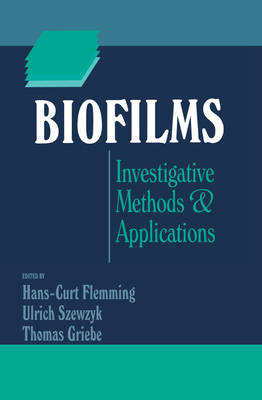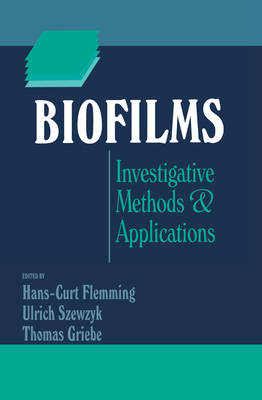
- Afhalen na 1 uur in een winkel met voorraad
- Gratis thuislevering in België vanaf € 30
- Ruim aanbod met 7 miljoen producten
- Afhalen na 1 uur in een winkel met voorraad
- Gratis thuislevering in België vanaf € 30
- Ruim aanbod met 7 miljoen producten
Zoeken
Biofilms
Investigative Methods and Applications
Hans-C Flemming, Ulrich Szewzyk, Thomas Griebe
Hardcover | Engels
€ 534,45
+ 1068 punten
Omschrijving
Until now, techniques for studying biofilms- the cellular colonies that live in drinking water systems, wastewater operations, even ground and surface water- have been limited. Yet during the last decade, biofilms have become a critical element in water quality preservation systems, a key component of wastewater treatment biological reactions and the subject of extensive microbiological inquiry. An understanding of biofilm development, structure and dynamics is one condition for improving water supplies and for addressing technical problems such as biofouling, corrosion and bioweathering. Biofilms: Investigative Methods and Applications provides the first in-depth assessment of current and experimental ways to study biofilms, both in sample form and in situ. It shows how sensors, microscopy, lasers, and calorimetry, among other tools, can be used to obtain data on the morphology and metabolism of biofilms. This text is the first to organize and examine the best methods for investigating biofilms. It covers culture-based methods and emerging nondestructive techniques. It also shows how they can be used to characterize biofilms in a variety of manmade settings, such as sewers, wastewater plants, and drinking water distribution systems, as well as in karsts and groundwater sources. In clarifying the way biofilms are studied, the book offers new insights into these living films. It also applies inquiry techniques to the many problems confronting the environmental specialist-corrosion control, biofouling, and the improvement of fixed reactors in wastewater treatment. At the same time it explains technologies for the controlled growth of biofilms and shows how biofilms can be effectively monitored and subjected to quantitative analysis. The technical information in Biofilms: Investigative Methods and Applications is designed to be of use to engineers and researchers and to be helpful in the generation of electronic data.
Specificaties
Betrokkenen
- Auteur(s):
- Uitgeverij:
Inhoud
- Aantal bladzijden:
- 266
- Taal:
- Engels
Eigenschappen
- Productcode (EAN):
- 9781566768696
- Verschijningsdatum:
- 1/06/2000
- Uitvoering:
- Hardcover
- Formaat:
- Genaaid
- Afmetingen:
- 153 mm x 240 mm
- Gewicht:
- 598 g

Alleen bij Standaard Boekhandel
+ 1068 punten op je klantenkaart van Standaard Boekhandel
Beoordelingen
We publiceren alleen reviews die voldoen aan de voorwaarden voor reviews. Bekijk onze voorwaarden voor reviews.











